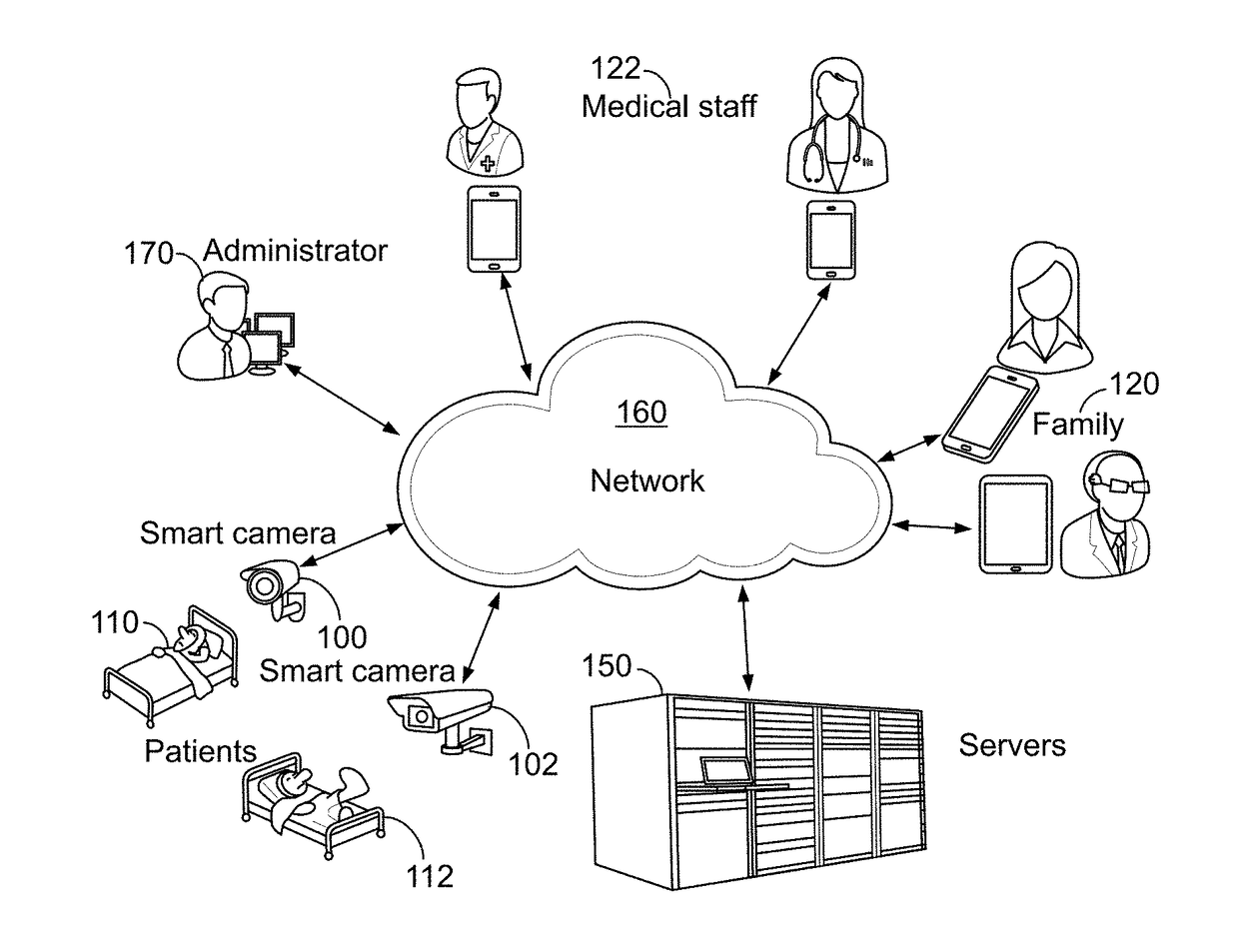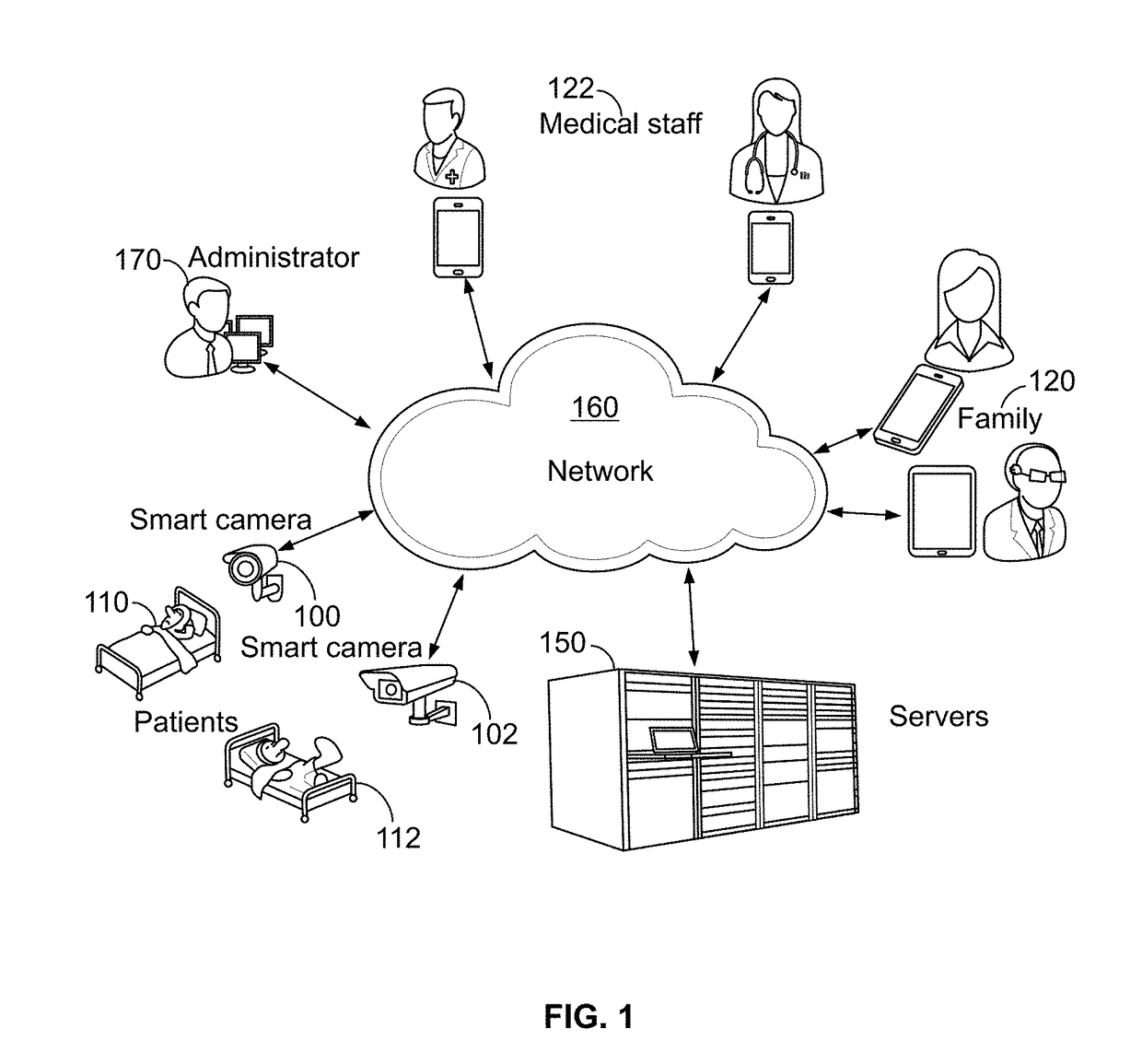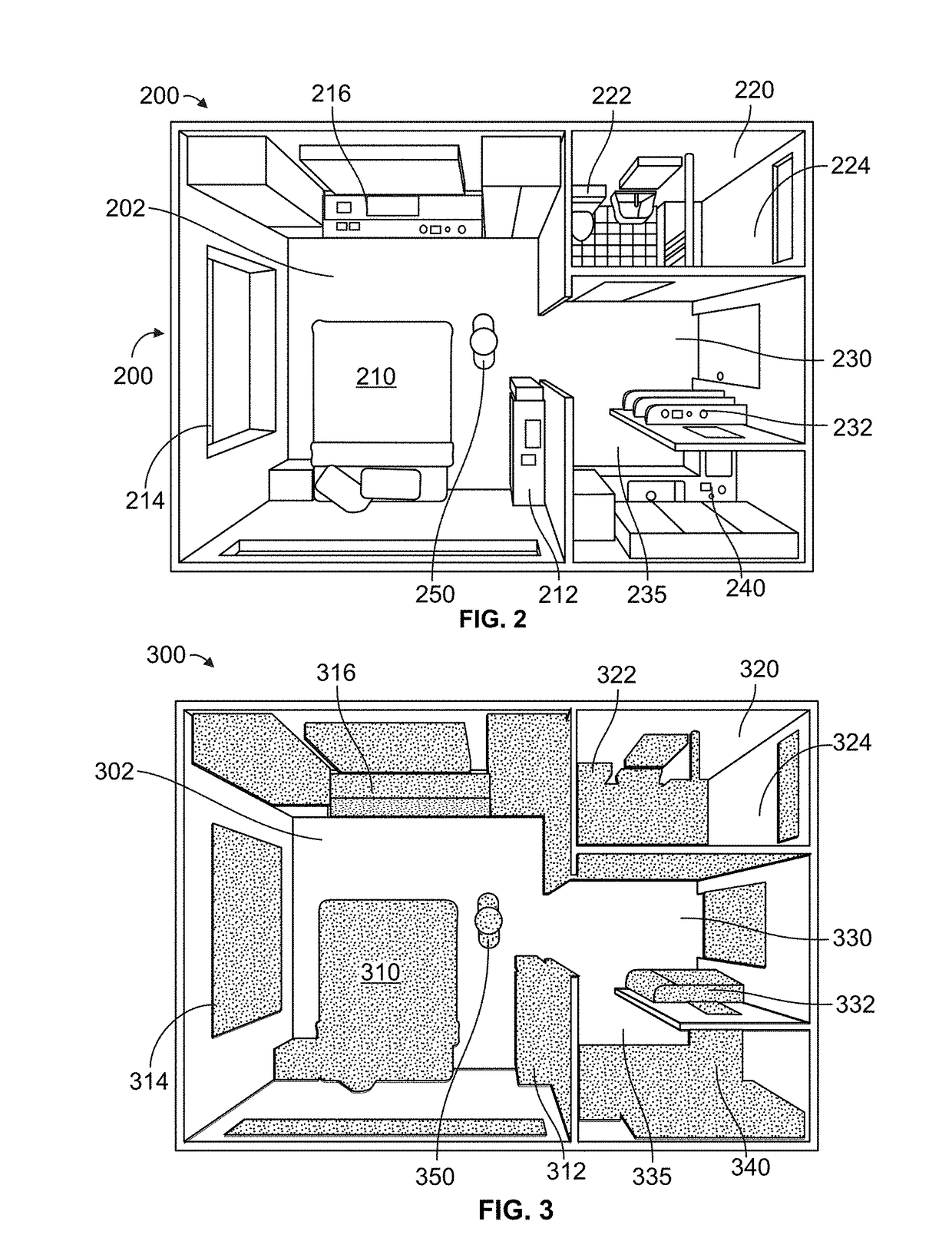Real-Time Awareness of Environmental Hazards for Fall Prevention
a real-time awareness and environmental awareness technology, applied in the field of real-time awareness of environmental hazards for fall prevention, can solve the problems of difficult automatic fall prediction, severe head injuries, joint distortion, etc., and achieve the effect of improving patient safety and not violating patient privacy
- Summary
- Abstract
- Description
- Claims
- Application Information
AI Technical Summary
Benefits of technology
Problems solved by technology
Method used
Image
Examples
Embodiment Construction
[0026]Detailed embodiments of the present invention are disclosed herein; however, it is to be understood that the disclosed embodiments are merely exemplary of the invention, which may be embodied in various forms. Therefore, specific structural and functional details disclosed herein are not to be interpreted as limiting, but merely as a representative basis for teaching one skilled in the art to variously employ the present invention in virtually any appropriately detailed method, structure or system. Further, the terms and phrases used herein are not intended to be limiting, but rather to provide an understandable description of the invention.
[0027]FIG. 1 shows the overall architecture of the system. A plurality of smart cameras 100 and 102 may be provided and are used to assess the environment around individuals such as patients and to detect predetermined conditions such as conditions that are dangerous, potentially harmful of that can lead to falling. In a preferred embodimen...
PUM
 Login to View More
Login to View More Abstract
Description
Claims
Application Information
 Login to View More
Login to View More - R&D
- Intellectual Property
- Life Sciences
- Materials
- Tech Scout
- Unparalleled Data Quality
- Higher Quality Content
- 60% Fewer Hallucinations
Browse by: Latest US Patents, China's latest patents, Technical Efficacy Thesaurus, Application Domain, Technology Topic, Popular Technical Reports.
© 2025 PatSnap. All rights reserved.Legal|Privacy policy|Modern Slavery Act Transparency Statement|Sitemap|About US| Contact US: help@patsnap.com



